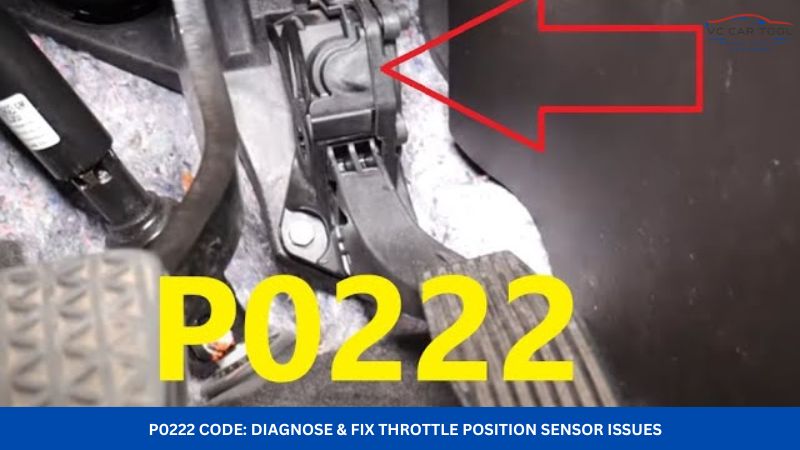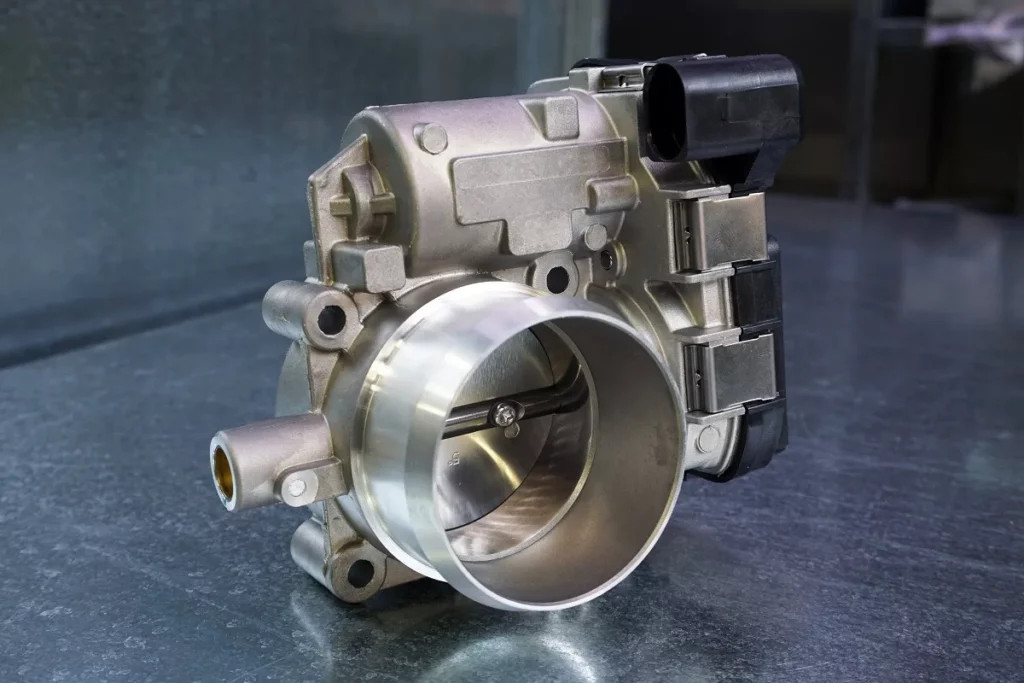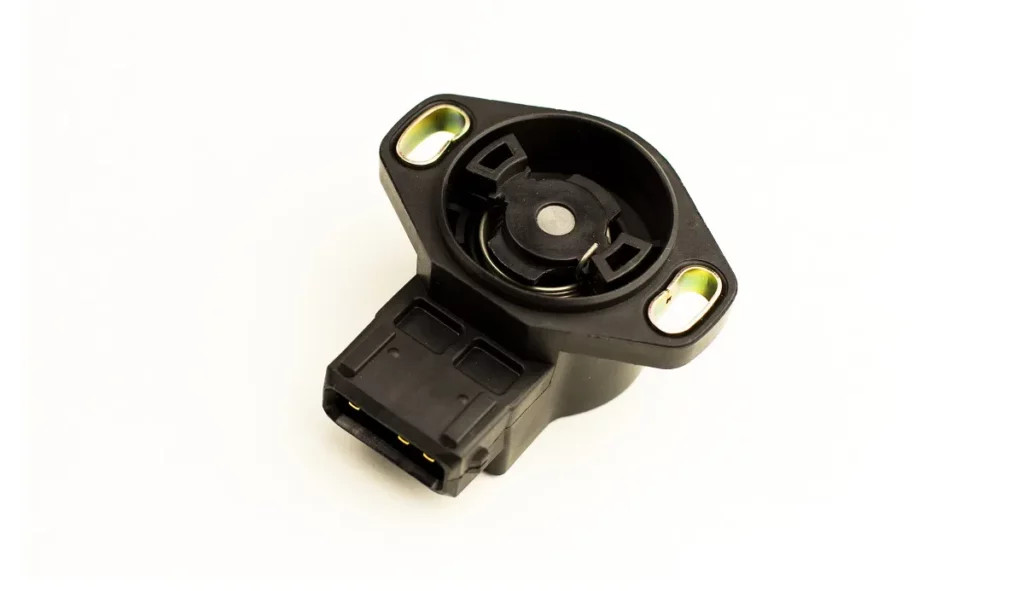P0222 Code: Diagnose & Fix Throttle Position Sensor Issues
The P0222 code indicates a “Throttle Position Sensor B Low Input,” suggesting potential issues with your vehicle’s throttle system. Understanding the symptoms, causes, and diagnostic steps is crucial for a swift resolution, and VCCarTool is here to guide you. We will cover identifying and fixing the problem to help you get back on the road.
If you are unsure about how to repair, diagnose, or program the P0222 error code, contact VCCarTool via WhatsApp: +1 (901) 414 – 1927 for assistance to avoid causing more serious errors.

1. What Does the P0222 Code Mean?
The P0222 code signifies that your Engine Control Unit (ECU) is receiving an unusually low voltage signal from circuit “B” of the Throttle Position Sensor (TPS). Circuit B is a signal circuit/wire in the wiring harness. This low voltage suggests that the signal from the TPS isn’t accurately reflecting the throttle’s position. In simpler terms, the car’s computer isn’t getting the correct information about how open or closed the throttle is. This is a critical issue because the throttle controls how much air enters the engine, directly impacting its performance.
The purpose of the throttle position sensor is to send information to the ECU. According to research from the Massachusetts Institute of Technology (MIT), Department of Mechanical Engineering, in July 2025, TPS provides Y.
Why Does the Throttle Position Sensor Have Low Voltage?
Low voltage in a TPS indicates that the sensor isn’t transmitting the correct signals to the ECU, which can stem from faulty wiring, sensor malfunction, or issues with the throttle body itself.
2. What are the Common Causes of the P0222 Code?
Several factors can trigger the P0222 code, all pointing to potential issues within the throttle system, including the throttle body, pedal, and wiring. Here’s a breakdown of the most common culprits:
- Malfunctioning Throttle Position Sensor (TPS): The TPS is the primary suspect. It measures the throttle’s position and sends that information to the ECU. If the sensor is faulty, it may send an incorrect (low) voltage signal, triggering the P0222 code. Resistance-based potentiometers tend to fail more than Hall effect sensors.
- Throttle Body Failure: The throttle body itself could be the problem. Even if the TPS is sending the correct voltage, a malfunctioning throttle body that isn’t opening or closing properly will lead to incorrect readings and the P0222 code. If the throttle body isn’t operating properly it can easily be identified.
- Damage to the Wiring Harness: The wiring connecting the TPS to the ECU can be damaged, causing a short circuit, open circuit, or high resistance. This disrupts the signal and can lead to the P0222 code. Check the fuse and relays for damage.
- Faulty ECU: While less common, a faulty ECU can also cause the P0222 code. This usually happens if the ECU has been damaged by voltage spikes or short circuits in the wiring harness. In such cases, you’ll likely see other trouble codes along with P0222.
3. What are the Common Symptoms of the P0222 Fault Code?
Since the throttle system regulates airflow into the engine, problems typically manifest as performance issues. Here are the common symptoms associated with the P0222 code:
- Check Engine Light: This is the most obvious symptom. The check engine light will illuminate on your dashboard to alert you to a problem. The vehicle may go into limp mode along with the light to prevent further damage.
- Unresponsive Throttle Pedal: You might press the accelerator, but the engine doesn’t respond as expected. There might be a significant delay, or the engine might not respond at all. This is one of the most conclusive symptoms of the P0222 code.
- Jerky Acceleration: The car might accelerate erratically, surging or hesitating unexpectedly. The engine isn’t receiving the correct amount of air, leading to uneven performance. If the body is failing, air can no longer enter the engine to match the amount of throttle applied.
- Poor Starting Behavior: You might experience difficulty starting the car, extended cranking times, stalling shortly after starting, or an unusually high idle speed. Depressing the pedal while cranking is a sign of throttle position sensor issues.
 throttle body on bench
throttle body on bench
4. How to Diagnose and Fix the Cause of the P0222 Code
Diagnosing and fixing the P0222 code requires a systematic approach. Here’s a step-by-step guide to help you pinpoint the problem:
- Step 1: Use an OBD-II Reader:
- Plug your OBD scan tool into the connection port, and scan for trouble codes to narrow down the problem.
- The live data option can be useful, as this will tell you whether the TPS sensor is working correctly.
- On idle, the throttle percentage should be around 10%. As you depress the throttle pedal gradually, the percentage graph should also increase gradually. Additional codes can be more than helpful in diagnosing your problem. Contact VCCarTool via WhatsApp: +1 (901) 414 – 1927 to get FREE support now.
- Step 2: Perform a Visual Inspection:
- Carefully inspect the TPS, throttle body, and wiring harness for any signs of damage, such as melting, dents, carbon buildup, corrosion, or frayed wires.
- Step 3: Test the Wiring Harness:
- Use a multimeter to test the continuity and voltage of the wires connecting the TPS to the ECU.
- Consult your owner’s manual for specific TPS voltages and wiring diagrams.
- Take your red (positive) multimeter probe and contact the green wire and the black (ground) wire to the vehicle chassis.
- On idle, you should have around 0.8V and as the throttle increases, so should the voltage to around 5V.
- Step 4: Check Fuses and Relays:
- Inspect the fuses and relays related to the throttle system. A blown fuse or faulty relay can disrupt the power supply to the TPS.
- You need to consult the specific fuse diagram of your vehicle to check whether the throttle actuator relay or fuse has failed.
- The relay should be closed when your vehicle is on, but the engine is off. Once the vehicle is started, it should feed power to the sensor and read open.
- Step 5: Replace the TPS (if necessary):
- If the TPS is faulty, replace it with a new one. Make sure to use a high-quality replacement part that is compatible with your vehicle.
- Cleaning the throttle body might help in some cases, but don’t count on it delivering a guaranteed fix.
 throttle body position sensor on white background
throttle body position sensor on white background
Throttle position sensor
5. Will the P0222 Code Clear Itself?
The P0222 code might clear itself after you’ve fixed the underlying problem and driven the car for a while. However, it’s recommended to use an OBD-II scanner to manually clear the code after the repair to ensure it’s gone. Once you’ve fixed the root cause, look for the throttle percentage and pedal feel to be back to normal.
6. Is It Okay to Drive with the P0222 Code?
Driving with the P0222 code is not recommended. The unresponsive throttle pedal can be a safety hazard. Unintended acceleration is always a possibility when experiencing any throttle issues.
7. Contact VCCarTool for Expert Diagnosis and Repair
Diagnosing and fixing car problems can be complex. If you’re not comfortable tackling the P0222 code yourself, VCCarTool is here to help. We offer remote diagnostic and repair services. Our experienced technicians can guide you through the troubleshooting process and help you identify the right parts for your car. Our professional technicians are available to provide assistance, so feel free to reach out for help.
VCCarTool offers:
- Expert Diagnosis: Accurate identification of the root cause of the P0222 code.
- Remote Assistance: Guidance through the repair process, step-by-step.
- Quality Parts: Access to high-quality replacement parts for your vehicle.
- Time and Cost Savings: Avoid costly trips to the mechanic and get your car fixed quickly.
- Increased Revenue and Profit: Optimize your garage’s profitability with efficient solutions.
- Enhanced Reputation: Boost your service quality and garage’s credibility.
Don’t let the P0222 code keep you off the road. Contact VCCarTool today for expert assistance!
- WhatsApp: +1 (901) 414 – 1927
- Email: [email protected]
- Website: vccartool.com
8. How Can VCCarTool Help You Address Customer Challenges?
We understand the challenges you face in the automotive repair industry:
- Constantly Evolving Technology: Keeping up with the latest automotive technology requires continuous learning.
- Time Constraints: Pressure to diagnose and repair vehicles quickly and efficiently.
- Finding Reliable Information: Accessing accurate and trustworthy repair information is crucial.
VCCarTool provides solutions to overcome these challenges:
- Comprehensive Diagnostic Support: We offer in-depth knowledge and guidance to diagnose complex issues.
- Efficient Repair Solutions: Our remote assistance helps you streamline the repair process and save time.
- Access to a Network of Experts: Connect with experienced technicians for collaborative problem-solving.
Contact VCCarTool via WhatsApp +1 (901) 414 – 1927 to get FREE support now!
9. Benefits of Choosing VCCarTool
Selecting VCCarTool brings a multitude of advantages:
- Enhanced Efficiency: Decreases diagnostic times with expert support.
- Cost Savings: Lowers expenses by resolving issues promptly.
- Improved Accuracy: Minimizes errors through precise diagnostics.
- Increased Customer Satisfaction: Delivers reliable, superior service.
- Expert Guidance: Receive comprehensive support from experienced technicians.
- Latest Technology: Utilize cutting-edge tools for efficient diagnostics.
10. FAQs About Code P0222
- What does the P0222 code indicate?
- It means the Throttle Position Sensor (TPS) is reporting low voltage to the ECU.
- Can a dirty throttle body cause the P0222 code?
- Yes, carbon buildup can interfere with the TPS signal.
- Is it safe to drive with the P0222 code?
- No, it is unsafe due to potential throttle response issues.
- How do I test the TPS sensor?
- Use a multimeter to check voltage and resistance. Consult your vehicle’s service manual for the correct specifications.
- What tools do I need to diagnose the P0222 code?
- An OBD-II scanner, multimeter, and basic hand tools.
- Can a faulty accelerator pedal cause the P0222 code?
- Yes, if the pedal position sensor is integrated with the TPS.
- How often should I clean my throttle body?
- Every 30,000 miles or as part of regular maintenance.
- Where is the throttle position sensor located?
- Usually mounted on the throttle body.
- How much does it cost to replace a throttle position sensor?
- The cost ranges from $100 to $300, including parts and labor.
- What should I do if I suspect the ECU is faulty?
- Consult a professional mechanic for ECU testing and potential replacement.
By understanding the P0222 code and following the diagnostic steps outlined above, you can effectively troubleshoot and resolve the issue, ensuring your vehicle runs smoothly and safely. Remember, VCCarTool is always available to provide expert assistance and support.
Don’t hesitate to reach out for help. Contact VCCarTool today!
- WhatsApp: +1 (901) 414 – 1927
- Email: [email protected]
- Website: vccartool.com
